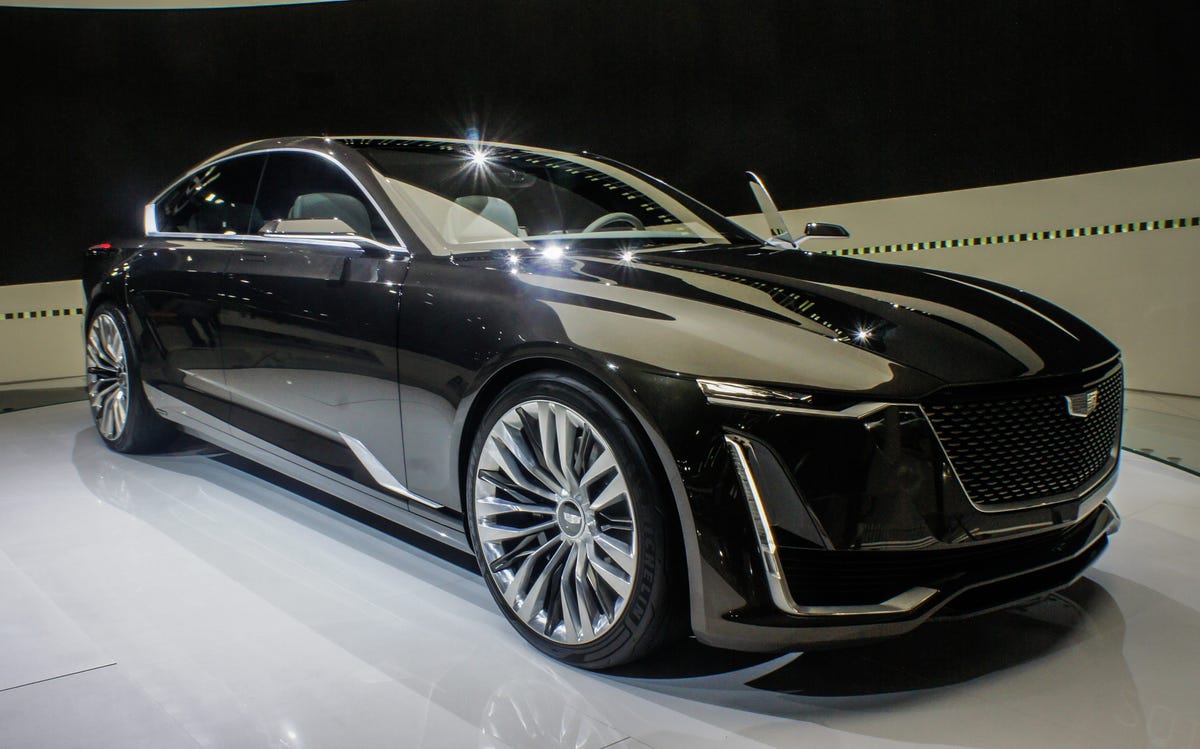Cadillac humanizes technology with Escala concept
Cadillac's Escala concept, on display at the Los Angeles auto show, demonstrates how the company intends to reconcile technology with luxury design.

Cadillac brought its Escala concept to the Los Angeles auto show, after its debut during the Pebble Beach Concours d'Elegance in August. This new concept shows Cadillac's thoughts on how its next generation of luxury vehicles might look.
Taki Karras, design manager for Advanced Vehicles at GM, said the Escala evolves Cadillac's Art and Science design language, focusing on "quiet confidence," the phrase for Cadillac design going forward. Going further on conceptual design, Karras mentioned that his design team's watchwords are "bold, sophisticated and optimistic." As designers sketch out a concept, they avoid qualities of flamboyance.
In coming up with the Escala, Karras says he faced the "pressure of designing a modern luxury flagship sedan that embodies Cadillac heritage." The badge is an obvious Cadillac brand marker, although on the Escala it does away with colors in favor of a brushed metal look. Likewise, the hood shows classic Cadillac lines.
Lighting technology plays a big part in the Escala's exterior, as it takes advantage of LEDs and new OLED automotive lights. This lighting technology, with its minimal footprint, lets designers keep apertures in the body small. Karras maintained a vertical lighting accent, a hallmark of modern Cadillac design first seen on the CTS model.
The Escala was built on the same platform as the new CT6 sedan, which makes extensive use of aluminum to keep weight low. Karras said that he wanted to articulate a look of lightness in the Escala's design, avoiding the ponderous, heavy look of some older luxury sedans.
One thing that stands out on the Escala are the curves in hood, roofline and fenders, signaling a softening of the hard angles of recent Cadillac models. The Escala also shows a very raked windshield, contributing to an aerodynamic look.
As a luxury vehicle, Karras designed the Escala to be both a car you would want to drive, and a car you would want to be driven in, with very different attributes for front and rear seats. That flexibility suggests the different markets where a new Cadillac sedan might be sold, some in which people tend to drive themselves, and others with a more chauffeur-driven culture.
The rear lighting on the Escala incorporates both LED lamps and OLED lighting. OLED panels are very compact and flat, letting them serve as marker lights with minimal impingement on the body structure. This rear lighting pattern also hearkens back to the 1967 Cadillac Eldorado, one of the surprising historical references of the Escala.
Karras chose a fastback design for the Escala with a rear liftgate. Although he insists sedans are not dead, he likes the fast-looking profile and functional aspect of the liftgate design.
To compensate for the fact that the rear edge makes loading luggage into the deep liftgate area difficult, the Escala's cargo floor actually lifts up when the hatch is raised. Karras says that makes opening the back an event in itself, while also making luggage access easy. A feature like that could very well make it into a flagship sedan or fastback vehicle.
The Escala incorporates a pillarless design, allowing for an unbroken side graphic and easy cabin access, but presenting its own engineering challenge for a production vehicle.
For the dashboard design, Karras favors simplicity. As such, curved OLED touchscreens play a large part for control surfaces. Climate control switchgear remains on the dashboard, but incorporated into ledges below the wood trim to maintain subtlety.
To minimize the tablet look of the large screens, Cadillac wrapped the bevels in leather, with an embossed Cadillac logo on the leading edge. Karras likes the idea of little design touches like this, as owners will discover more things about their cars as they spend time with them.
The steering wheel maintains easily accessible switchgear, which, however, fits into the spokes with a subtle look.
The large dial on the console, controlling the car's infotainment functions, incorporates a profile from a classic Cadillac hood ornament.
Leather-covered front seats use prominent side bolsters, emphasizing the driver-focus.
To go beyond the typical leather, wood and metal materials of a luxury car cabin, Karras incorporated a wool-blend material for the rear seats.
Rear seats also feature power adjustment, making it a first-class experience for those who prefer to employ a chauffeur.
So as not to overwhelm with technology, all the screens in the rear can slide up into a hidden position, leaving a narrow, viewable strip for useful, but unobtrusive, information.
OLED screens in the rear compartment provide entertainment or productivity for passengers.

